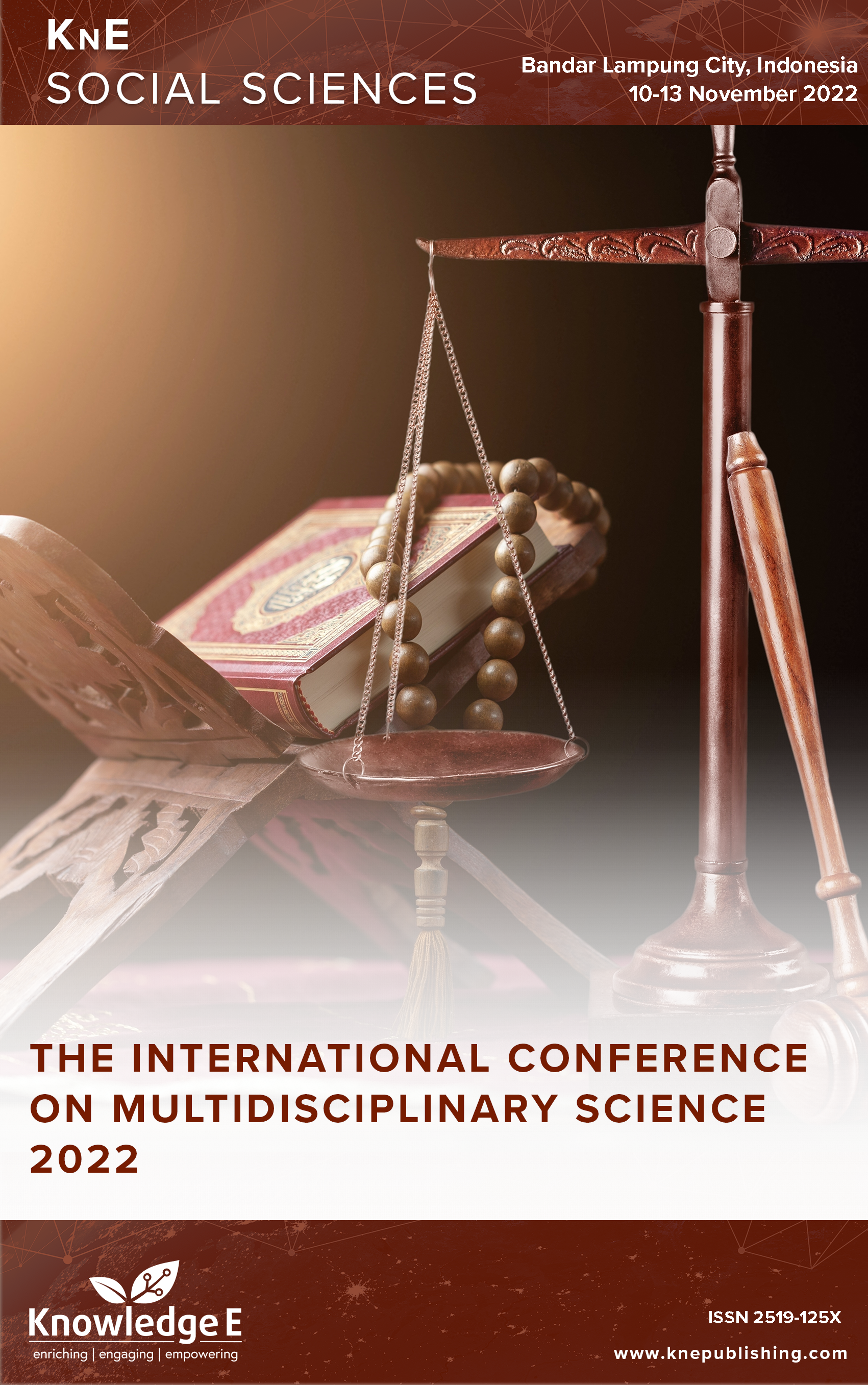The Journey of Islamic Education in Universities in the Southern Frontier Provinces of Thailand and Their Response to the Global Crisis
DOI:
https://doi.org/10.18502/kss.v8i16.14036Abstract
This study aims to describe the journey of Islamic education in universities in the border province of southern Thailand and how they respond to the global crisis. Is research with a qualitative approach to ethnographic methods of Realist ethnography, which is an objective view of information learned in the field and usually uses a third-person point of view. Data sources were obtained through interviews, field observations, and sociocultural phenomena. Based on the study of researchers, the results of the study concluded that the journey of Islamic education in ASEAN countries including the Southern Border Province of Thailand both Muslim majority and minority can be divided into four phases sequentially. First phase is the introduction phase. Second phase is when Islamic education faces external and global challenges. The third phase is when Islamic education is strong enough to face challenges and be able to solve problems. Fourth phase, Islamic education will provide all the solutions for the global crisis. By looking at the phases of the Journey of Islamic Education in Higher Education in the Southern Border Province of Thailand, will be able to provide all solutions for the global crisis.
Keywords: muslim, islamic education, global crisis
References
[2] Haji Abdul HB. Raja Campa & Dinasti Jembal Dalam Patani Besar. Kelantan: Design Library; 1994.
[3] Raj D. Linkages: A brief description of the kingdoms of the Malay Archipelago and the kingdoms of Southeast Asia. Gerakbudaya; 2022.
[4] Teeuw A, Wyatt DK. Hikayat Patani the Story of Patani. Hikayat Patani the Story of Patani. Martinus Nijhoff; 1970.
[5] Islam MH. Islam and civilization (analysis study on the history of civilization in Islam). Al-Insyiroh J Stud Keislam. 2019;5(1):22–39.
[6] Haemindra N. The problem of the Thai-Muslims in the four Southern Provinces of Thailand (part one). J Southeast Asian Stud [Internet]. 1976 Sep 7;7(2):197–225. Available from: https://www.cambridge.org/core/product/identifier/ S0022463400015010/type/journal_article
[7] Thoha. Pemikiran Islam di Malaysia: Sejarah dan Aliran. Vol. 20, Pemikiran Islam di Malaysia: Sejarah dan Aliran. Gema Insani; 2010. p. 40–3.
[8] Manan A, Armi FR, Amri WY. The expansion of Islam in Pattani, South Thailand: A Historical Analysis. J Al-Tamaddun. 2022;17(1):85–95.
[9] Puaksom D. Patani historiography in contention’. Thai South Malay North Ethn Interact a Plur Penins. 2008;71.
[10] Harish SP. Ethnic or religious cleavage? Investigating the nature of the conflict in Southern Thailand. Contemp Southeast Asia [Internet]. 2006 Apr;28(1):CS28-1c. Available from: http://bookshop.iseas.edu.sg/bookmarks/CS28_1/003/index.html
[11] Owen NG. The emergence of modern Southeast Asia: A new history. NUS Press; 2005.
[12] Neamsuvan O, Tuwaemaengae T, Bensulong F, Asae A, Mosamae K. Erratum to “A survey of folk remedies for gastrointestinal tract diseases from Thailand’s three southern border provinces.” J Ethnopharmacol. 2012;144(1):11–21]. J Ethnopharmacol [Internet]. 2013 Jun;148(1):345. Available from: https://linkinghub.elsevier.com/retrieve/pii/S0378874113002663
[13] Liow JC. Islam, education and reform in Southern Thailand: Tradition & transformation. Islam, education and reform in Southern Thailand: Tradition & transformation. Institute of Southeast Asian Studies; 2010. p. 1–219.
[14] Dorloh S, Darussalam B. Curriculum reform in Islamic Law Program: Experience of Prince of Songkhla University, Patani Campus.
[15] Yusuf I. Islamic studies in the ASEAN Region. Am J Islam Soc [Internet]. 1998 Oct 1;15(3):173–178. Available from: https://www.ajis.org/index.php/ajiss/article/view/2170
[16] Assalihee M, Boonsuk Y. Reforming religion-based higher education for sustainable development: The case of Islamic studies international program at Prince of Songkla University. In 2022. p. 67–82. Available from: https://link.springer.com/10.1007/978- 3-031-07191-1_5
[17] Taylor S. Ethnographic research: A reader. Sage; 2001.
[18] Adams KM. Ethnographic methods. In: Handbook of research methods in tourism: Quantitative and qualitative approaches [Internet]. Edward Elgar Publishing; 2012. p. 339–351. Available from: http://www.elgaronline.com/view/9781781001288.00023. xml
[19] Aslan A, Hifza H, Suhardi M. Dinamika Pendidikan Islam Di Thailand Pada Abad 19-20. Nazhruna J Pendidik Islam [Internet]. 2020 Feb 7;3(1):38–54. Available from: http://e-journal.ikhac.ac.id/index.php/NAZHRUNA/article/view/476
[20] Funston NJ. Southern Thailand: The dynamics of conflict. Vol. 50. Institute of Southeast Asian Studies; 2008.
[21] Jory P. From Melayu Patani to Thai Muslim. South East Asia Res [Internet]. 2007 Jul 18;15(2):255–279. Available from: https://www.tandfonline.com/doi/full/10.5367/ 000000007781509535
[22] Pelrine RE, Kornbluh RD, Joseph JP. Electrostriction of polymer dielectrics with compliant electrodes as a means of actuation. Sensors actuators. A Phys. 1998;64(1):77–85.

